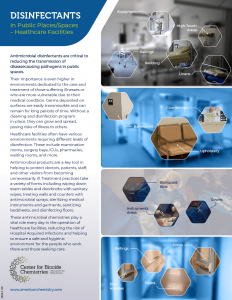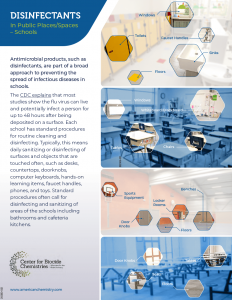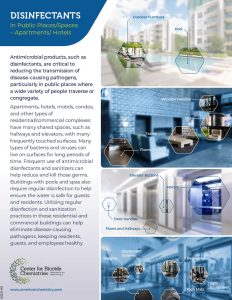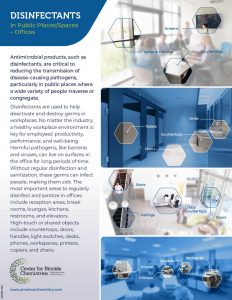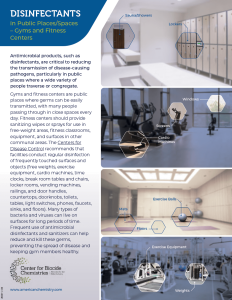Clean public spaces aren’t a “nice to have” – they’re a “must have.” Our shared spaces, and our health, are better protected with antimicrobials
Anywhere there are a lot of people, there are a lot of germs. They lurk on planes, trains, and buses. They sneak around in offices, schools, and daycare facilities. And they hide in swimming pools, spas, and fountains.
To reduce the transmission of disease-causing viruses and bacteria in spaces with masses of people, antimicrobial disinfectants and sanitizers are used to kill the harmful bacteria and viruses. Floors, fixtures, and seats are mopped or wiped down multiple times a day, and public swimming areas and fountains are treated with disinfectants to kill viruses and bacteria that could make you or your family sick.
Whether it is in a school, an office, or your own home, frequent disinfection of these spaces is important, especially during flu season.

Disinfectants
What are disinfectants?
A disinfectant is an agent, such as a chemical or heat, that is used to destroy, inactivate, or reduce the concentration of pathogens (such as bacteria, viruses, and fungi) on hard surfaces and in water. A disinfectant, as opposed to a detergent or soap cleaner, will have the EPA registration number and will likely have a product label that says it helps kill 99.9% of listed bacteria and viruses.
What are some common disinfectants?
Common chemical disinfectants include chlorine, alcohols (isopropyl alcohol and ethanol), bleach (sodium hypochlorite), phenol, ethanol, and quats (quaternary ammonium compounds).
How do disinfectants work?
Disinfectants inhibit and help prevent the growth of microorganisms on non-living surfaces and objects by destroying the cell wall of microbes or interfering with their metabolism. Disinfection does not necessarily kill all microorganisms, especially resistant bacterial spores, but they help work to discourage bacterial growth by helping to kill bacteria or slow growth processes.
Disinfectants in Public Places Campaign Infographics
The Center for Biocide Chemistries has created infographics to help raise awareness about disinfectants used in public places.



